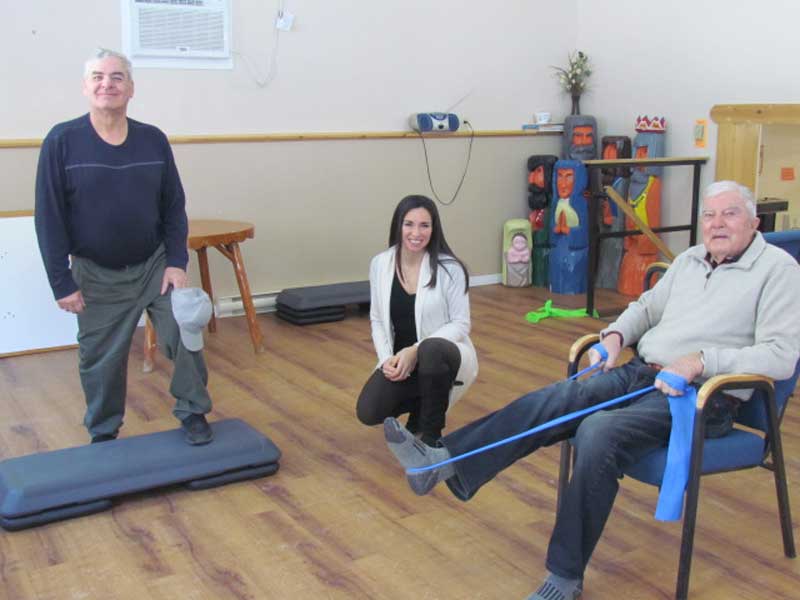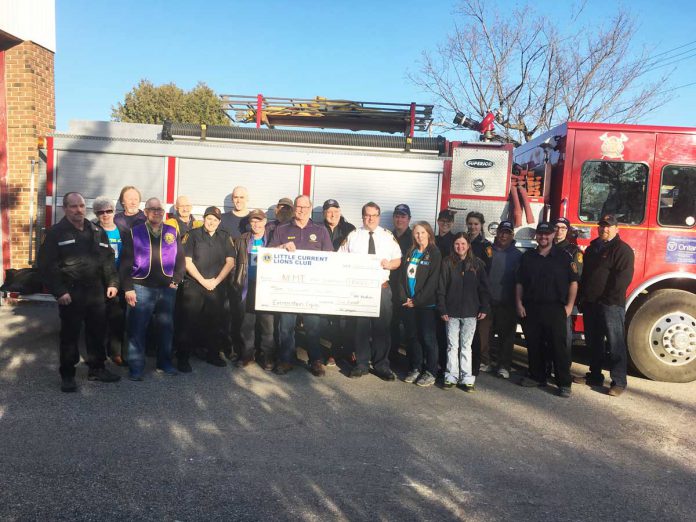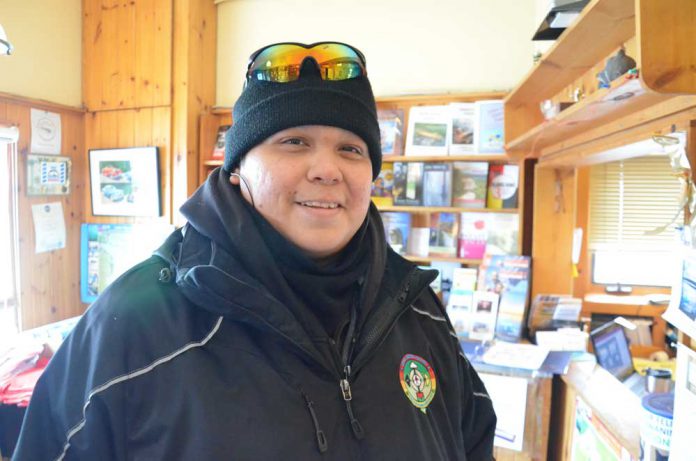by Betty Bardswich
MANITOULIN—All too many Islanders are familiar with osteoarthritis (OA), the most widespread way of life ailment in people over 65. This condition affects any joint in the body that is covered by cartilage including the fingers, hands, knees and hips with the ailment occurring more often in women.
Treatment for osteoarthritis includes a diagnosis from a medical history and physical examination.
There are exercise programs and physiotherapy for dealing with OA and now Manitoulin can boast of the ‘Good Living with osteoArthritis from Denmark’ (GLA:D) course that is offered in M’Chigeeng, Aundeck Omni Kaning, Manitowaning and Wiikwemkoong. GLA:D works hand in hand with local physiotherapist Leslie Green of the Northeastern Joint Assessment Centre (NEJAC), a program offered at the Manitoulin Health Centre (MHC) in Little Current and it is taught by kinesiologist Maria McInnis of Kagawong.
Ms. McInnis has 10 years of experience with physiotherapy, rehabilitation, ergonomic assessments and cardiac rehabilitation at the Little Current hospital. She heard about the program from Ms. Green and took training for GLA:D in Toronto.
As Ms. McInnis explained, the eight-week program combines both exercise and education to help people with hip and knee OA and the goal is to put off surgery, decrease pain and allow one to do more activities around the house. The course works on muscles around the joints, on alignment and one’s core and stretching. It is funded through the Manitoulin Family Health Teams and attendance is based on a referral from a doctor. The class has 8 to 10 people at a time and Ms. McInnis tries to cycle one new person a week. Clients attend twice a week for the very functional exercises that do not require any special equipment.
The Expositor talked with two gentlemen who were enrolled in the GLA:D program in M’Chigeeng. Ivan Taibossigai, who resides in that community, was in his 10th session with Ms. McInnis and spoke highly of her and of the course. “It’s helped me out with the pain from my Achilles tendon which I tore two and a half years ago,” he said. “And my left knee has a plate. It helps my knees. I hope to be able to walk up and down stairs. That has really improved. I really appreciate how Maria teaches the course. She is very easygoing and takes her time at explaining everything. She is very professional.”
John Mason of Spring Bay, who was just finishing his eighth week, is also enjoying the program. “Wonderful,” he said when asked about GLA:D. “It’s really helped me a lot. Maria gave me a lot of exercises to carry on so I’m all set. Doctor Stadnyk told me about the program. I would recommend it to everyone. It really strengthens your muscles. I would recommend this to people with arthritis.”
GLA:D Canada explains in a handout for class participants that OA was previously thought to be a ‘wear and tear’ disease that led many people to think that they cannot and should not be physically active. To the contrary, cartilage needs moderate load through physical activity to regenerate itself. Ligaments and muscles help stabilize the joint and cartilage, which has no blood supply, requires nourishment from synovial fluid. The cartilage needs to be appropriately loaded to regenerate itself. When loaded and unloaded, that is, synovial fluid is pumped in and out of cartilage, this stimulates new development of cartilage which improves its shock absorbing capacity.
As GLA:D Canada further explains that there are risk factors you cannot change, such as age, gender and heredity, when it comes to developing OA. This includes joint overload for many hours or many years but sports and regular physical activity recommendations for good health have not shown to lead to OA. Other changes that can be made include losing weight and physical activity. Being overweight increases the risk of the cartilage and joint becoming overloaded. Neuromuscular activity improves cartilage quality while inactivity worsens cartilage, muscle and bone quality. Weak muscles are worse shock absorbers than strong muscles, and, as GLA:D Canada explains, weak muscles cause additional strain on the joint. Exercise is effective for pain relief and neuromuscular exercise is the most effective in addition to improving stability in the affected joint.
Other treatments for OA include pain killers, anti-inflammatories, walking aids, hot and cold packs, transcutaneous electrical nerve stimulation (TENS), foot supports and canes. GLA:D Canada points out that glucosamine has not been shown to have an effect on pain or cartilage structure that is greater than that of a placebo and that OA treatment guidelines from around the world do not recommend arthroscopy for OA, a non- invasive surgery which is best served to repair a torn meniscus or damaged ligaments.
GLA:D statistics show that over 13,000 people in Europe have participated in the program and most have experienced less pain, better physical function and a better quality of life. This has held true after the course ends and one year later. Fewer people are taking pain killers and fewer people are on sick leave. Participating in GLA:D creates the appropriate load for healthy cartilage, improves joint range of motion, improves stability and joint function and improves confidence in the knee/hip by helping one move better. After GLA:D, there is less pain, better function, a higher quality of life and less painkillers.
Recommendations include physical activity, which is any body movement making the heart beat faster which improves general health such as blood pressure, cholesterol and blood sugar levels and reduces the risk of getting inactivity-related diseases such as cardiovascular disease, diabetes and certain cancers. Another recommendation is exercise, which is a type of physical activity carried out with a specific purpose that is performed to improve function. GLA:D Canada further recommends to always exercise at a level that suits your fitness level. To show improvement, repeat exercise, increase the load gradually and continue to challenge yourself. Aim to be physically active for 30 minutes a day at least twice a week with moderate to high intensity and with an emphasis on quality and control. Do not sit down for more than 20 minutes at a time and remember, exercise therapy has been shown to produce the best pain and functional outcomes for OA.





